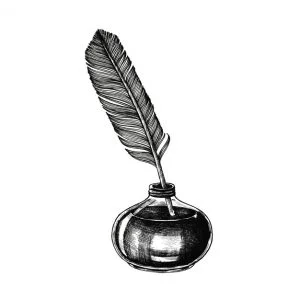
Natural hair wigs offer the perfect solution for adding length, volume, and style while maintaining a natural look. However, over time, even high-quality natural hair wigs can experience damage from heat styling, improper care, or environmental exposure. The good news is that you can often fix a damaged natural hair wig at home with the right techniques and products. In this guide, we’ll walk you through the steps to restore your wig and bring it back to life.
1. Common Issues with Natural Hair Wigs
Natural hair wigs human hair are made from real human hair, which means they can be affected by similar issues that natural hair faces, such as dryness, frizz, tangling, and breakage. Here are some of the most common problems:
 Dryness and Frizz
Dryness and Frizz
- Lack of hair moisture can cause the hair to become dry and more frizzy, making it difficult to style.
- Exposure to heat tools and environmental factors like sun and wind can worsen dryness.
 Tangles and Knots
Tangles and Knots
- Natural hair wigs tend to tangle when not stored or maintained properly.
- Sleeping or exercising in the wig can increase tangling.
 Shedding and Thinning
Shedding and Thinning
- Poor-quality construction or rough handling can lead to hair shedding from the wig cap.
- Brushing the wig too aggressively or using the wrong products can cause breakage.
 Loss of Shine and Softness
Loss of Shine and Softness
- Over-washing and exposure to hard water can stripen the wig of its natural oils, making it dull and rough.
2. Step-by-Step Guide to Fix a Damaged Natural Hair Wig

Restoring a damaged wig at home requires patience and care. Follow these steps to bring your wig back to life:
Step 1: Detangle the Wig
Start by gently detangling the wig to remove knots and prevent breakage.

- Wide-tooth comb or a wig brush
- Detangling spray or a leave-in conditioner
How to Detangle:
- Place the wig on a wig stand or lay it on a flat surface.
- Lightly spray the wig with a detangling spray or leave-in conditioner.
- Start combing from the hair ends, working your way up to the hair roots.
- Avoid tugging or pulling to prevent shedding.
Step 2: Wash the Wig Gently
Washing helps to remove product buildup and refresh the hair.

- Sulfate-free shampoo
- Lukewarm water
- A wide-tooth comb
How to Wash:
- Fill a sink or basin with some lukewarm water.
- Add a small amount of sulfate-free shampoo.
- Submerge the wig and gently massage the hair.
- Rinse with clean, lukewarm water.
- Pat dry with a microfiber towel — avoid wringing or twisting.
Step 3: Deep Condition for Moisture
Deep conditioning restores softness and shine to dry, brittle hair.

- Deep conditioning mask or hair treatment
- Plastic cap
How to Condition:
- Apply the deep conditioner evenly from roots to ends.
- Cover the wig with a plastic wig cap and let it sit for 15–30 minutes.
- Rinse it thoroughly with some cool water to seal the hair cuticles.
Step 4: Restore Shine with Natural Oils
Oils help lock in some moisture and add a healthy shine.

- Argan oil, coconut oil, or jojoba oil
How to Apply:
- Take some drop of hair oil and rub it between your palms.
- Lightly run your hands through the straight wigs, focusing on the ends.
- Avoid applying too much hair oil to prevent a greasy look.
Step 5: Trim Split Ends (Optional)
If your wig has split ends, trimming them will improve the overall appearance.

- Hair scissors
How to Trim:
- Place the wig on a wig stand.
- Use sharp scissors to trim the hair ends of the hair.
- Cut small sections at a time to avoid cutting too much.
Step 6: Style with Heat Protection
If you plan to use heat styling hair tools, protect the wig from further damage.

- Heat protectant spray
- Flat iron or curling wand
How to Style:
- Spray the heat protectant evenly over the wig.
- Use a low to medium heat setting to curl or straighten the hair.
- Avoid using heat on the lace to prevent damage.
3. How to Prevent Future Damage
Proper care and maintenance can prevent future damage and extend the lifespan of your natural hair wig. Here’s how:





4. Best Products for Restoring Natural Hair Wigs
Using the right hair products that can make a significant differences in restoring your wig’s health and appearance. Here are some recommendations:
- Shea Moisture Raw Shea-Butter Moisture Retention Hair Shampoo – Gentle, sulfate-free, and ideal for restoring moisture.
- Olaplex No. 3 Hair Perfector – Strengthens and repairs damaged hair fibers.
- Moroccanoil Treatment – Lightweight oil that adds shine and softness without weighing down the hair.
- Mielle Organics Babassu Oil Deep Conditioner – Provides intense moisture and restores elasticity.
5. Conclusion

Fixing a damaged natural hair wig at home is entirely possible with the right care and techniques. By detangling, washing, deep conditioning, and trimming, you can restore your wig’s natural softness and shine. Additionally, adopting good maintenance habits — such as using heat protectants and storing the wig properly — will help keep your natural hair wig looking flawless for longer. With these such simple steps, you can breathe new life into your favorite natural hair wig and enjoy a beautiful, natural look every day!


 My love for hair transcends boundaries, and I'm dedicated to sharing tips, tricks, and the latest trends in the world of hairstyling using hair wigs.
My love for hair transcends boundaries, and I'm dedicated to sharing tips, tricks, and the latest trends in the world of hairstyling using hair wigs.
